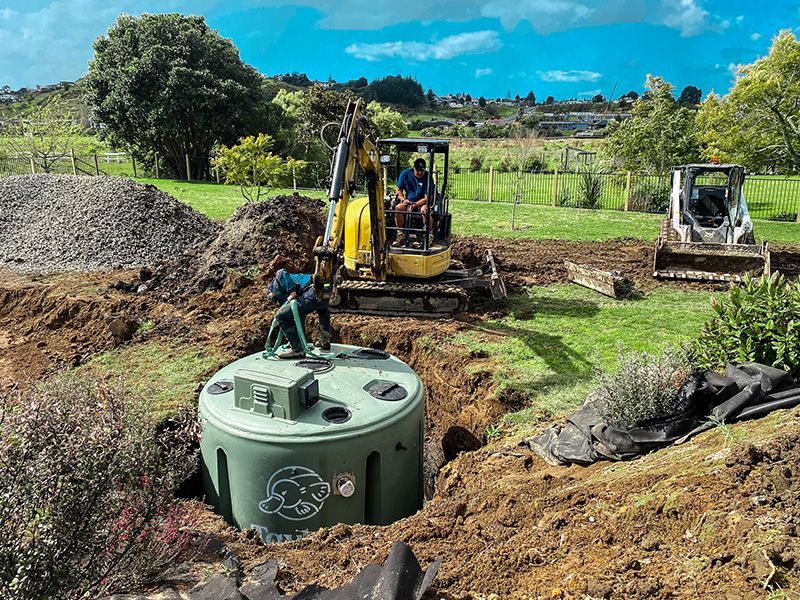How to Prepare Your Property for a New Septic System Installation

Proper preparation for a septic installation is essential for ensuring a hassle-free and efficient process. Without the right steps, the installation can run into costly delays, compliance issues, or unexpected challenges. We believe that careful planning, combined with professional guidance, is the best way to set your property up for success.
In this guide, we’ll walk you through everything you need to know about property septic readiness, from selecting the right location to working with experts. Whether you’re upgrading an old system or installing one for the first time, these steps will help you prepare for a smooth process.
Understand Your Property’s Needs
The first step in preparing for a septic upgrade is understanding your property’s specific requirements. Every location is unique, and factors like soil type, water table level, and property size play a crucial role in determining the best septic system for your needs.
Soil Testing and Percolation Tests
One of the most important steps is conducting soil and percolation tests. These tests evaluate how well the soil on your property absorbs water, which directly impacts the type and size of the system you’ll need. Poor soil drainage might require additional preparation, such as bringing in sand or gravel to improve absorption.
Evaluate Your Water Usage
Consider your household size and daily water usage when planning your system. Larger families or properties with heavy water usage may need a bigger tank or advanced treatment systems to handle the load.
Plan the Installation Site
Choosing the right location for your septic system is critical. The site must meet local regulations while being practical for your property layout.
Setbacks and Compliance
Work with your contractor to ensure the system is installed a safe distance from wells, streams, and property lines. Most areas have specific setback requirements to protect water sources and neighboring properties.
Accessibility for Maintenance
A well-placed septic system should also be easy to access for regular maintenance. Think about where maintenance trucks will park and whether the tank is accessible without disrupting landscaping or outdoor structures.
Clear the Installation Area
Before your contractor begins work, the installation area needs to be fully cleared. This involves removing any obstacles that could interfere with digging and system placement.
Remove Trees and Shrubs
Roots can damage septic tanks and pipes over time, so it’s essential to clear trees, shrubs, and other vegetation from the installation zone. Be sure to clear a wide enough area to accommodate future system expansions or upgrades.
Level the Ground
A level installation site ensures the system operates efficiently. If your property has uneven terrain, your contractor may need to grade or level the area before beginning the installation.
Coordinate with Professionals
Working closely with experienced contractors, like our team at Forrest Excavation, is one of the most important steps in preparing for septic upgrade projects. Professionals not only ensure the job is done right but also help you navigate local regulations and permits.
Obtain Necessary Permits
Most areas require permits before installing a septic system. Your contractor can guide you through the application process and ensure all documents are submitted on time.
Schedule the Installation
Once all preparations are complete, schedule the installation at a time that minimizes disruptions to your daily routine. A clear timeline allows everyone involved to stay on track and avoid unnecessary delays.
Prepare for Post-Installation
After the system is installed, there are a few additional steps to ensure it functions optimally for years to come.
Backfill and Landscaping
Once the tank and pipes are in place, the excavation site will be backfilled with soil. You can then plan your landscaping around the septic area, keeping in mind that heavy structures or vehicles should never be placed above the system.
Regular Maintenance
Scheduling regular inspections and pumping is key to maintaining a healthy septic system. Talk to your contractor about setting up a maintenance schedule to keep your system in top condition.
Tips for a Smooth Installation Process
- Communicate with Your Contractor: Keep open lines of communication with your excavation team to address any concerns or changes during the process.
- Plan for Utility Lines: Identify underground utility lines in advance to avoid disruptions during excavation.
- Budget for Unexpected Costs: While professionals do their best to plan ahead, it’s wise to set aside funds for any unforeseen issues.
Conclusion
Septic installation preparation doesn’t have to be overwhelming. By taking the time to understand your property’s needs, clearing the installation site, and working closely with experienced professionals, you can ensure a seamless and efficient process.
At Forrest Excavation, we’re here to guide you every step of the way. Whether you’re upgrading an outdated system or installing one for the first time, our team has the expertise to make your project a success.
For more information or to schedule a consultation, email us at
forrestexcavationinme@gmail.com, or call us at
207-441-4284. Let’s work together to ensure your property is ready for its new septic system!
